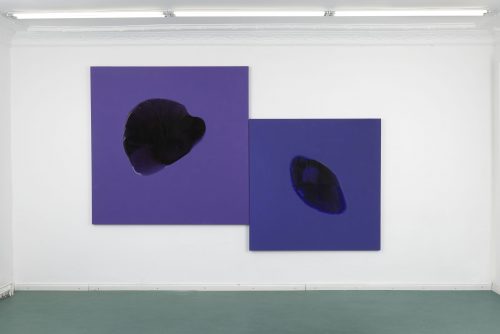
Jung Min Lee & Magdaléna Rybanská
The Stranger
Project Info
- 💙 Holešovická šachta
- 💚 Tina Poliačková
- 🖤 Jung Min Lee & Magdaléna Rybanská
- 💜 Tina Poliačková
- 💛 Bianka Chladek
Share on

Advertisement



















With every breath, your throat tightens anxiously - the air has ceased to be invisible, it announces itself with a pungent texture and a metallic aftertaste. The oceans rise and with them your fever, the forests burn and something smoulders inside you. The known world sheds its skin and so do you. It seems to you that this may not be just ordinary weather, but a symptom. The Stranger exhibition sketches the idea of a post-apocalyptic world disrupted by ecological collapse and digital overlay as a place of hybridisation, where machines, ruins and new bodies mingle. It questions the myth of the autonomous self and develops a speculative scenario of a liminal space where strangeness means survival and humanity becomes a myth.
Imagining post-apocalyptic worlds “after us” or “without us” is not a unique phenomenon in art or pop culture today, as the experience of global pandemic and climate crisis constantly reminds us of its terrifying proximity, like a monstrous face crammed into the rear-view mirror of a fully running car. It is not for nothing that it is said that objects in the mirror are much closer than they appear. This tinkering with the genre of science fiction, according to Deleuze, can wield a nomadic power of shifts, ruptures and discontinuities, directing our gaze towards social and cultural representations of hybrid, monstrous or strange ‘others’. This is not only about the nowadays continuously mentioned resuscitation of the ability to imagine possible future worlds (without humans), but also about mirroring and making visible the symptoms of crisis present in contemporary culture. Frederic Jameson argues that science fiction has the capacity to mirror the political unconscious, fantasies, memories, social expectations, as well as subliminal anxiety. Thus, it reflects a sense of estrangement at the rapid pace of the precipitous changes taking place in the present. What happens when we no longer recognize our own planet or ourselves?
In their joint exhibition, Jung Min Lee and Magdaléna Rybanská touch not only on the mythopoetic narrative in the ruins of the post-industrial world, but also on the idea of a more-than-human body entangled in relations with digital technologies. Magdaléna Rybanská's imposing steel sculptures of an “iron maiden” and a “chair” from her Browsing Bruises series prompt speculation about the already ongoing deformation of the human body and its possible evolution caused by monstrous scrolling positions. Bruises, cuts or contusions, as the author herself refers to them, do not only deform the body in its biological form, but make visible the traces of the flow of intensities in the chaotic landscape of digital networks - they are an affective interface, shaped by the drumming rhythm of notifications and never-stopping dopamine loops.
A melancholic remembrance of humanity is also framed by Jung Min Lee's paintings, whether of a self-absorbed mechanical humanoid or the sleeping harpy from the 9999 Days series, which was born in the hands of scientists experimenting with the genetic chimerism of man and bird to adapt to the harsh conditions of a crumbling world wracked by a deadly virus. In classical ancient mythology, the harpy was fittingly seen as the personification of destructive winds and a monster abducting humans from the mundane world. We can trace their remains in the paintings of her latest series, Tipping Point, steeped in various valleys of toxic green that permeate the radioactive ravaged landscape or form an imaginary green screen as an immersive narrative setting. Against its backdrop, we can hear the plaintive tones of an Orphic being mitigating humanity's tragic oriel or surrender fully to the fragmented gaze of the sculptural hybrids of Keepers of the Rabbit Hole installation. After all, various anomalies are created in the radioactive zone, and the strange monsters of the “outside” can be also found inside us.
Tina Poliačková




